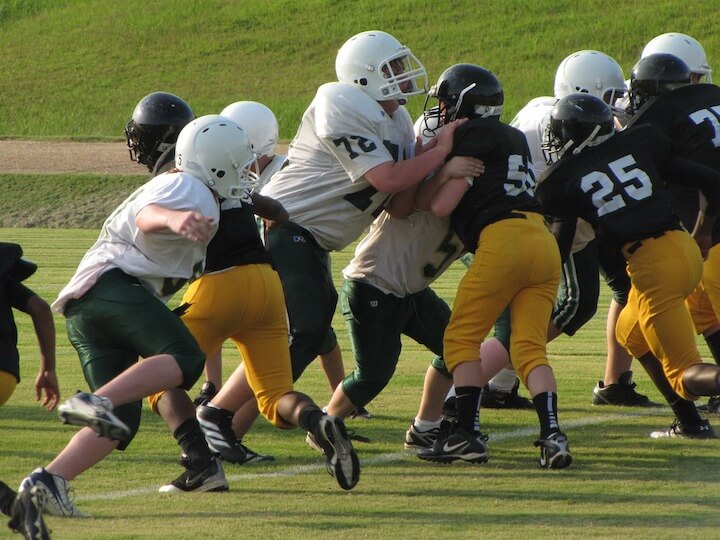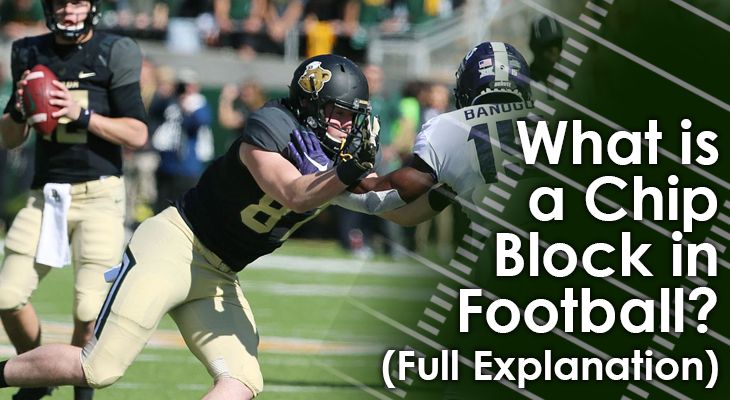Stud defensive ends can cause quite a lot of havoc in a football game.
They can rush off the outside of the line of scrimmage and get by offensive tackles before they know what hit them.
Once they are in open space behind the offensive line, the ends can then cause some damage in the backfield.
On passing plays, these defensive ends are now free to put a big hit on a quarterback with no other offensive players in sight.
In some instances, these hits result in a sack.
In others, it could result in a fumble and turnover.
Still, some hits could result in a big injury for the quarterback if the hit comes from his blindside.
Even if they aren't able to hit the quarterback, defensive ends running free in the backfield is not a good thing for the offense.
At the very least, they can force the quarterback to move, disrupting the pass.
Defensive ends can even deflect a pass or force the quarterback to scramble instead of throw it.
It's very difficult for an offense to double team a defensive end.
Unlike a defensive tackle who lines up in the middle of the field, a defensive end splits out all the way wide.
If the offense chooses to place a tight end to cover the rush, the defensive end can simply slide his alignment out further.
In plain terms, it's not easy to double team a defensive end at all.
So, what's an offense to do?
Answer: Utilize a chip block.
What is a Chip Block?
A chip block is a great way an offense can counter a great pass-rushing defensive end.
It's a simple contact play designed to knock the defensive end off their set path ever so slightly.
A chip block is usually performed in by either a running back or a tight end who's going to run a passing route.
Here, the running back or tight end "chips" the defensive end first before releasing towards the passing route.
The great part about a chip block is that it's unexpected in most cases (as we'll soon see).
Just like a crackback block, chip blocks can be effective even if the contact isn't very hard.
The goal of a chip block is to stall the defensive end before he's able to rush the quarterback.
Even stalling him a second or two can give the primary blocker time to get him under control.
It can also buy the quarterback a few extra seconds complete a successful pass on target.

Chip Block from a Tight End
When a tight end is on the field, the defensive end will likely slide to their outside shoulder.
This will make the tight end's path to the chip block much shorter than a running back's.
At the snap, the tight end will take a step in the direction of where the defensive end is.
The next step will be to aim a good, solid initial hit on the defensive end.
The tight end will then, ever so quickly, release off that block and start the passing route.
This type of chip block can lead to a few things.
First, it knocks the defensive end off balance for a bit due to the contact (and the subsequent quick release).
Second, it may take the defensive end by surprise now that there is a big offensive tackle blocking the path to the quarterback.
Third, it gives the nearby offensive tackle enough time to slide over to the defensive end, further preventing the pass rush.
Fourth, it could throw off the other defenders who now have to pick up the tight end in coverage to prevent a pass.
Due to the initial contact, the defense might think the tight end would stay in to help block and protect the quarterback.

Chip Block from a Running Back
The chip block from running backs will be slightly different, since they line up in the backfield.
At the snap, the offensive tackle will actually engage with the defensive end in pass blocking.
There most likely will not be a tight end lined up on that side of the field.
The running back will then start on the passing route, but angling it toward where the defensive end.
Approaching the line of scrimmage, the running back will then use the inside shoulder to make contact with the defensive end.
Then, the running back will quickly release and continue on the passing route.
This chip block is effective, again, because of the deception.
The defensive end starts out the play lining up against only the offensive tackle. Then, out of nowhere, the running back will help in the block.
Due to the element of surprise, the running back doesn’t have to deliver a crushing blow for the chip block to be effective.
A good running back chip block from will knock the defensive end off a bit, allowing the offensive tackle extra wiggle room while blocking the end.
Conclusion
One of the hardest things for an offensive line to do is keep a stud defensive end in check.
Blocking defensive ends effectively could make life a whole lot easier for the offense.
It's next to impossible to truly double-team block a defensive end, though, hence the use of a chip block.
Fortunately, a chip block can be an extremely effective strategy for the offense.
It's a great way to keep defensive ends off-balance, and to surprise them with extra, quick help from another blocker.
Whether it's executed by a tight end or running back, a chip block is one of the best tools an offense has to stop a rushing defensive end.

